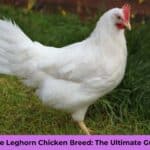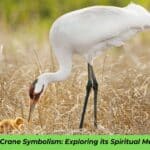Herons in Michigan captivate wildlife enthusiasts with their majestic presence. Michigan’s diverse wetlands play host to an array of fascinating wildlife, but few creatures captivate birdwatchers and nature enthusiasts quite like herons.
These long-legged waders, with their graceful movements and patient hunting techniques, have become iconic symbols of the Great Lakes State’s aquatic ecosystems.
In this comprehensive guide, we’ll dive deep into the world of Michigan herons, exploring eight remarkable species that call our state home, either year-round or during crucial parts of their life cycles.
From the towering Great Blue Heron to the elusive Yellow-crowned Night-heron, these herons in Michigan showcase the rich biodiversity of our wetlands.
Whether you’re a seasoned birder or a curious newcomer, the diverse array of herons in Michigan offers endless opportunities for discovery and appreciation in our state’s aquatic habitats.
Meet the Majestic Eight: Herons in Michigan’s Diverse Ecosystems
Great Blue Heron: The Iconic Wader Among Herons in Michigan
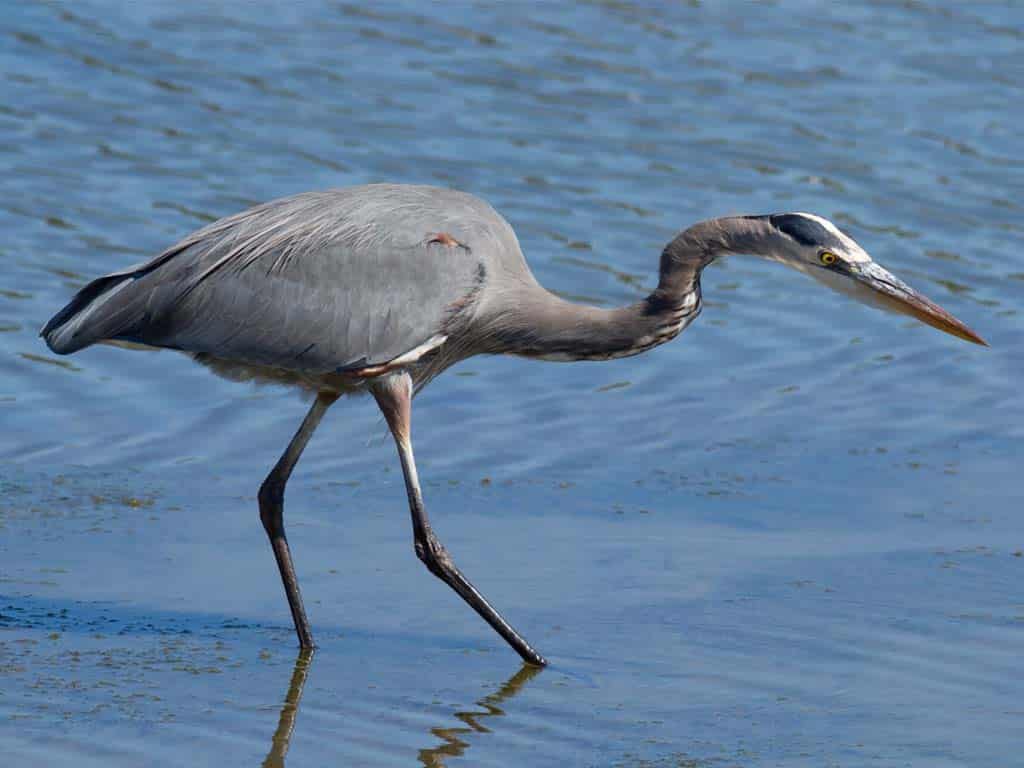
The Great Blue Heron stands as Michigan’s most recognizable and widespread heron species. This majestic bird, with its slate-gray plumage and impressive 6-foot wingspan, cuts a striking figure against the backdrop of our lakes and rivers.
Key Features:
- Height: 3.2 to 4.5 feet
- Wingspan: 5.5 to 6.6 feet
- Weight: 4.6 to 7.3 pounds
Great Blue Herons are opportunistic feeders, primarily hunting fish but also consuming amphibians, reptiles, small mammals, and even other birds. Their hunting technique is a marvel of patience and precision. They’ll stand motionless in shallow water, waiting for prey to come within striking distance before spearing it with their sharp bills in a lightning-fast motion.
“The Great Blue Heron’s ability to stand perfectly still for long periods is not just a hunting strategy – it’s an art form.” – John James Audubon Society
These birds are year-round residents in much of Michigan, though some may move south during particularly harsh winters. They prefer to nest in rookeries, often in tall trees near water bodies. A single rookery can host dozens of nests, creating a bustling heron community during the breeding season.
Check this out Finches in Ohio: 9 Ohio Finches (With Photos)
Green Heron: The Clever Michigan Heron Fisher
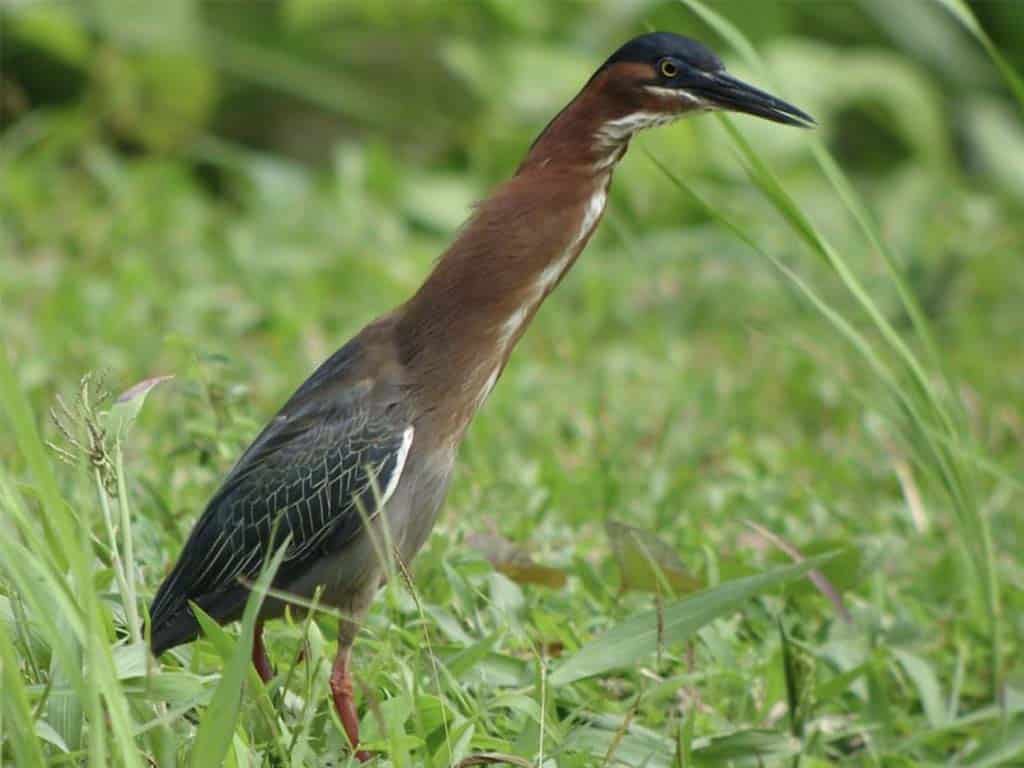
The Green Heron might be smaller than its Great Blue cousin, but what it lacks in size, it makes up for in intelligence and charm. This compact heron, with its deep green back and rich chestnut neck, is a master of camouflage and cunning.
Key Features:
- Length: 16-18 inches
- Wingspan: 25-27 inches
- Weight: 6-7 ounces
Green Herons are known for their remarkable tool-using behavior. They’ve been observed dropping small objects like twigs or feathers onto the water’s surface to lure curious fish within striking range. This level of problem-solving is rare in the bird world and showcases the Green Heron’s adaptability and intelligence.
Seasonal Patterns in Michigan:
- Spring arrival: Late April to early May
- Fall departure: September to October
- Some individuals may overwinter in southern Michigan during mild years
These herons prefer smaller water bodies like ponds, streams, and marshes with dense vegetation for cover. Their shy nature makes them less conspicuous than other heron species, but patient observers can often spot them perched low over the water, waiting for the perfect moment to strike.
Check this out Birds With Funny Names – The Complete List of Funny Bird Names
Black-crowned Night-heron: Michigan’s Nocturnal Heron Hunter
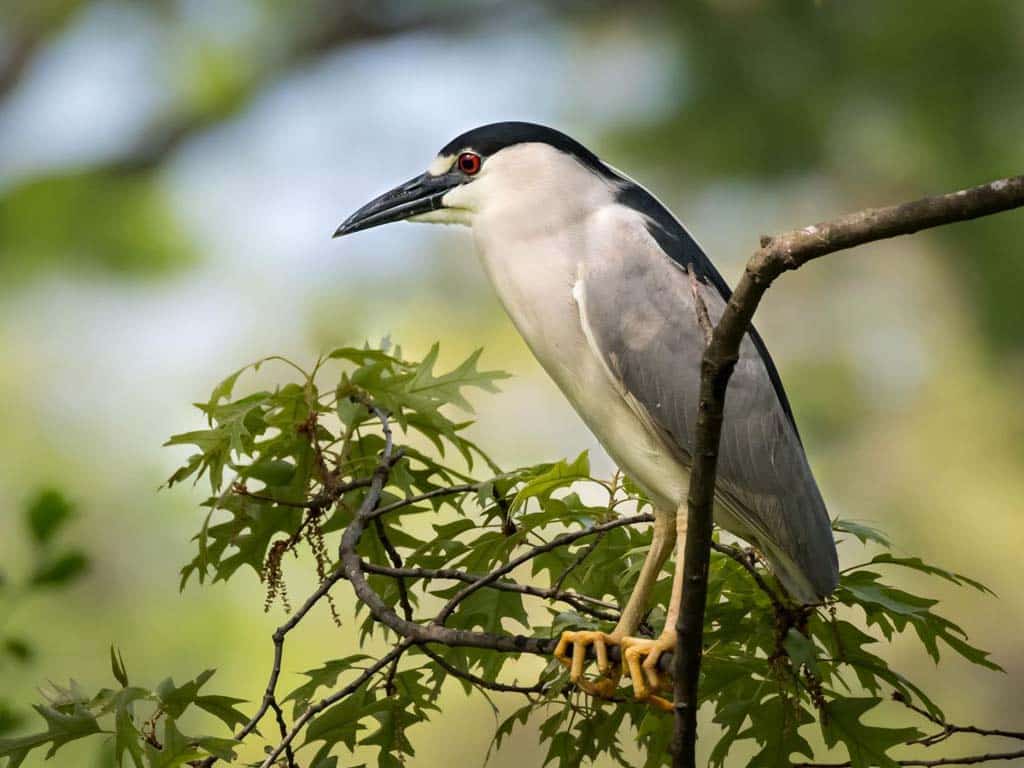
The Black-crowned Night-heron brings a touch of mystery to Michigan’s wetlands. As its name suggests, this stocky heron is most active during twilight and nighttime hours, when its unique adaptations give it an edge in hunting.
Key Features:
- Length: 22-28 inches
- Wingspan: 45-46 inches
- Weight: 1.6-2.3 pounds
Distinctive features include:
- Black cap and back
- Light gray wings and body
- Red eyes (in adults)
- Short, thick neck
These herons have excellent night vision, thanks to a high percentage of rod cells in their retinas. This adaptation allows them to hunt effectively in low-light conditions when many fish and amphibians are more active.
Black-crowned Night-herons are social birds, often forming large breeding colonies with other heron species. In Michigan, they typically arrive in April and depart by October, though some may linger into November in southern parts of the state.
| Behavior | Description |
| Feeding | Primarily nocturnal, consuming fish, amphibians, and aquatic invertebrates |
| Nesting | Colonial breeder, often in mixed-species rookeries |
| Vocalization | Distinctive “quock” call, often heard at dusk |
Check this out Woodpeckers In Michigan – 8 Sensational Michigan Woodpeckers
Yellow-crowned Night-heron: The Southern Visitor Among Herons in Michigan

The Yellow-crowned Night-heron is a rare treat for Michigan birdwatchers. This primarily southern species occasionally ventures into the state, offering eagle-eyed observers a chance to spot something truly special.
Key Features:
- Length: 22-28 inches
- Wingspan: 42-44 inches
- Weight: 1.3-1.7 pounds
Distinguished from its black-crowned cousin by:
- Yellow crown and white cheek patch
- Overall grayer plumage
- Longer, more slender bill
In Michigan, Yellow-crowned Night-herons are most likely to be spotted in the southern part of the state, particularly in wetlands along the Great Lakes shorelines. While breeding hasn’t been confirmed in Michigan, there’s potential for range expansion as climate patterns shift.
These herons have a specialized diet, focusing heavily on crustaceans, particularly crayfish. Their foraging behavior involves slow, deliberate movements as they stalk through shallow water or along mudflats.
Check this out Are Penguins Friendly Or Are Penguins Dangerous?
Great Egret: Michigan’s Graceful White Heron Giant
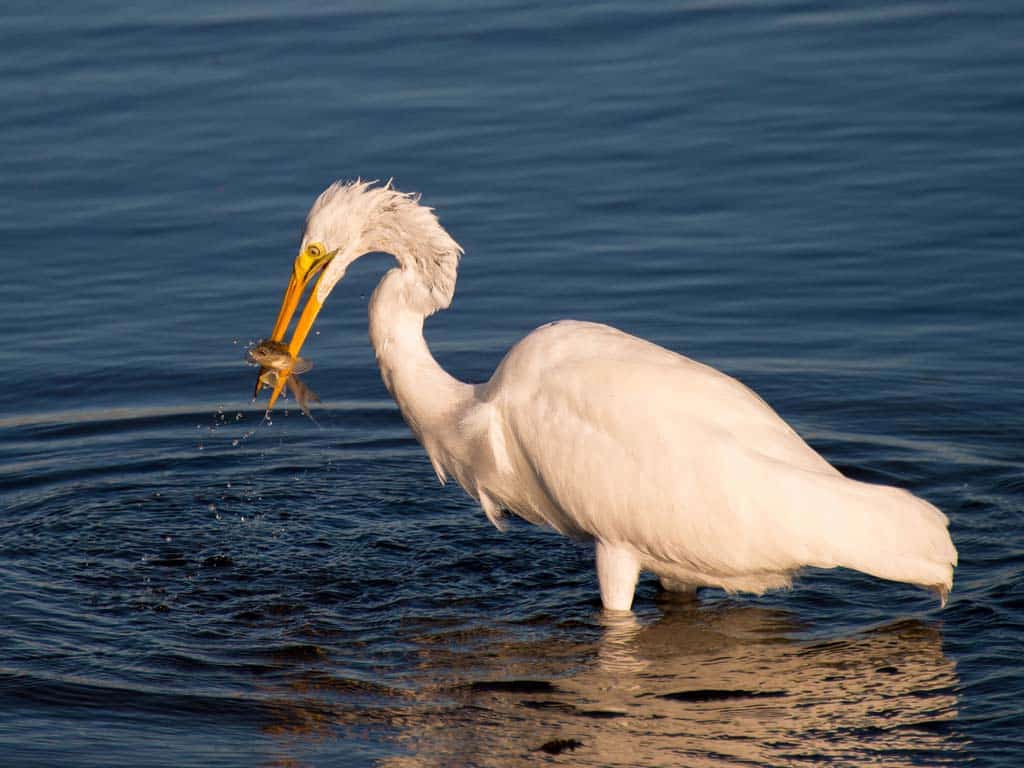
The Great Egret brings a touch of elegance to Michigan’s wetlands. This tall, all-white bird with its S-curved neck and dagger-like yellow bill is a sight to behold.
Key Features:
- Height: 3.3 feet
- Wingspan: 4.3-5.6 feet
- Weight: 1.5-3.3 pounds
Great Egrets nearly vanished from North America in the early 20th century due to plume hunting for the fashion industry. Their comeback story is a testament to the power of conservation efforts.
Breeding and Non-breeding Behaviors in Michigan:
- Arrive in Michigan: March to April
- Breeding season: April to July
- Depart: September to October (some may linger later)
During the breeding season, Great Egrets develop long, wispy plumes called aigrettes. These feathers play a crucial role in courtship displays, with males erecting them to attract mates.
Great Egrets are solitary foragers but often nest in large colonies. They prefer to hunt in shallow waters, using their long necks and bills to spear fish with remarkable accuracy.
Check this out Why Do Crows Chase Hawks? Do Crows Hate Hawks?
Snowy Egret: Michigan’s Dancing Heron Forager
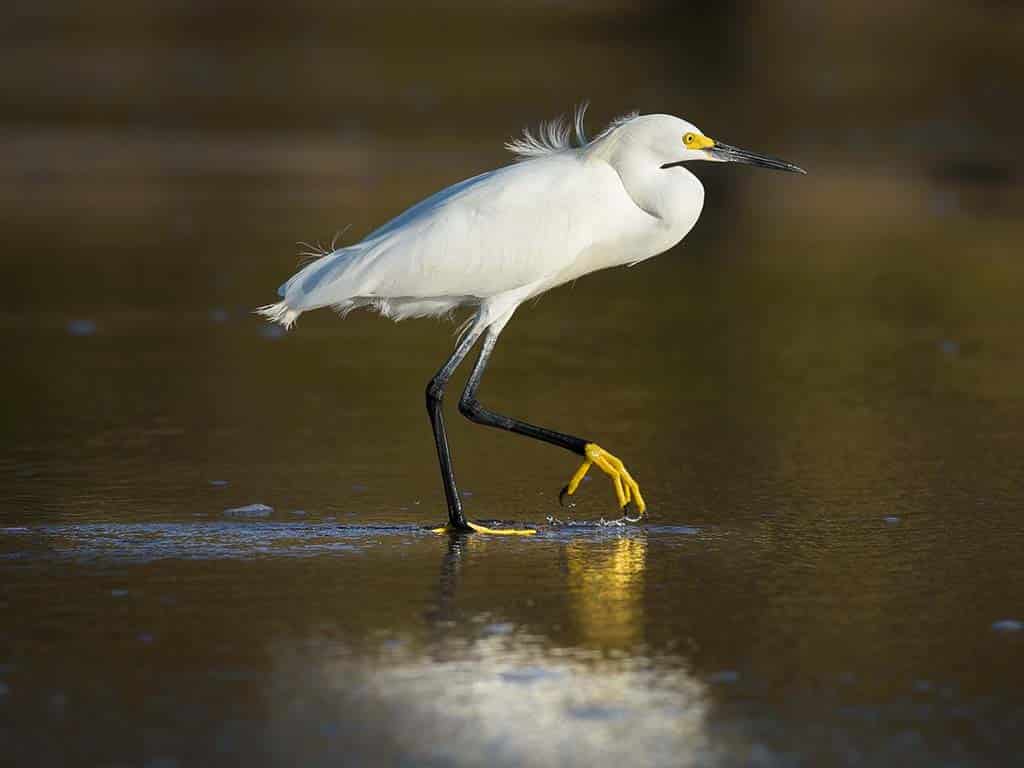
The Snowy Egret, with its pristine white plumage and distinctive yellow feet, is a rare but exciting find for Michigan birdwatchers. These medium-sized egrets are known for their energetic foraging behavior, often described as “dancing” in the shallows.
Key Features:
- Length: 20-27 inches
- Wingspan: 39-41 inches
- Weight: 0.8-1.3 pounds
Distinguishing features:
- All-white plumage
- Black bill with yellow lores (area between eye and bill)
- Black legs with bright yellow feet
Snowy Egrets employ a variety of hunting techniques, including:
- Foot-stirring: Shuffling their bright yellow feet to startle prey
- Wing-flicking: Using their wings to create shadows that attract fish
- Canopy feeding: Extending their wings over their head to reduce glare on the water
In Michigan, Snowy Egrets are considered rare visitors, most often spotted during post-breeding dispersal in late summer and early fall. They prefer coastal areas and shallow inland wetlands.
Little Blue Heron: A Study in Michigan Heron Transformation
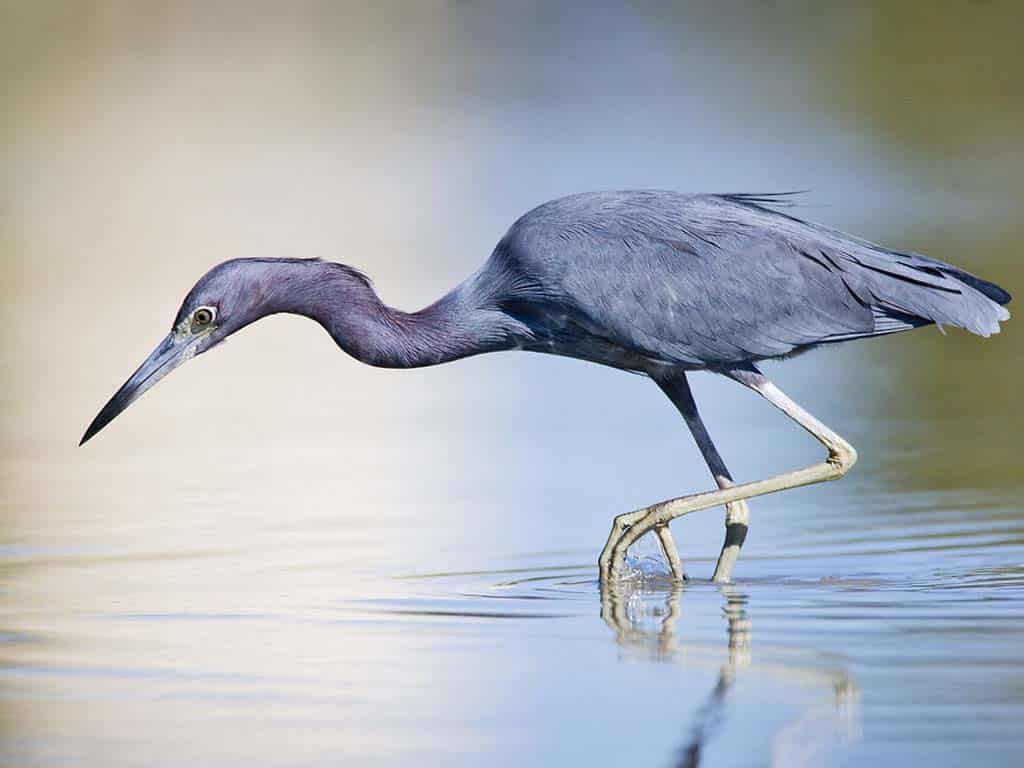
The Little Blue Heron offers Michigan birdwatchers a unique identification challenge. These birds undergo a dramatic plumage change as they mature, starting life as all-white birds before transitioning to a deep slate-blue as adults.
Key Features:
- Length: 22-29 inches
- Wingspan: 39-41 inches
- Weight: 0.7-1.3 pounds
Plumage Stages:
- Juvenile (first year): All-white
- Subadult (second year): Patchy blue and white
- Adult: Dark slate-blue body with purplish head and neck
This color transformation serves an important purpose. The white juvenile plumage allows young Little Blue Herons to blend in with other white egrets, potentially gaining protection from predators and access to better feeding areas.
In Michigan, Little Blue Herons are rare but regular visitors, typically seen in late summer and early fall. They prefer freshwater marshes, swamps, and the edges of lakes and ponds.
Cattle Egret: The Farmland Friend Among Herons in Michigan
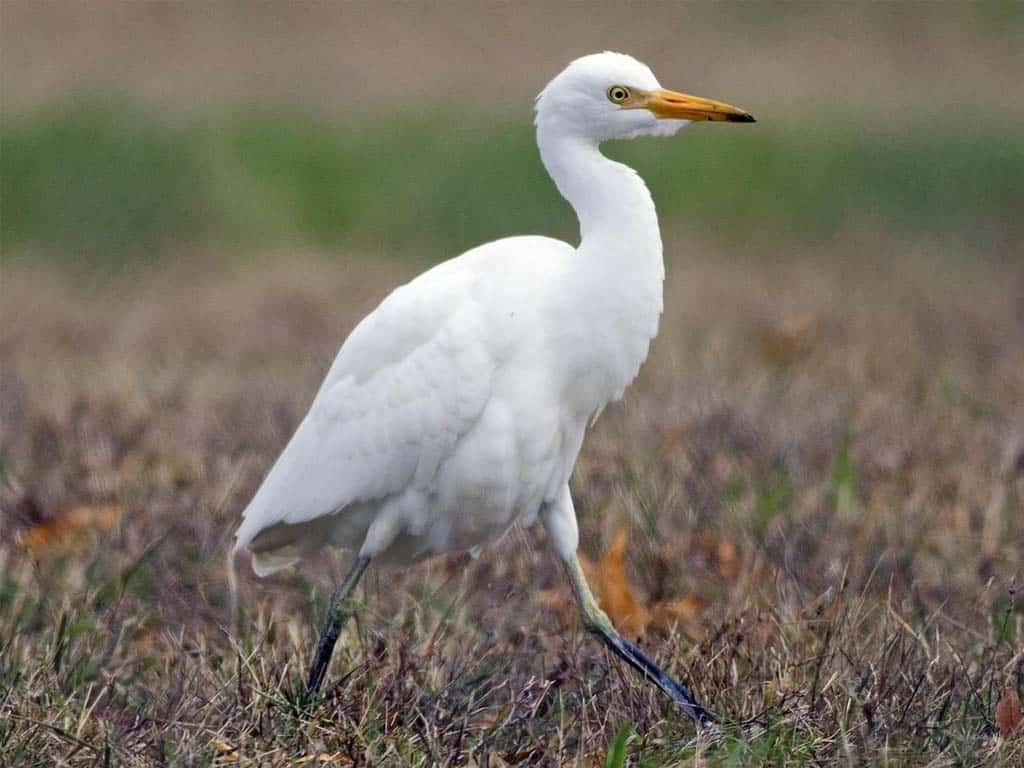
The Cattle Egret stands out among Michigan’s herons for its unique relationship with livestock. Originally native to Africa, these small, stocky egrets have spread globally over the past century.
Key Features:
- Length: 18-22 inches
- Wingspan: 34-38 inches
- Weight: 0.6-1.1 pounds
Identifying characteristics:
- Compact build with short, thick neck
- Yellow or orange bill
- Buff-colored plumes on head, chest, and back during breeding season
Cattle Egrets earned their name from their habit of following grazing animals, catching insects and small vertebrates disturbed by the livestock’s movement. This behavior has made them a common sight in pastures and agricultural areas worldwide.
In Michigan, Cattle Egrets are considered rare but increasing in frequency. They’re most often spotted during post-breeding dispersal in late summer and fall, particularly in the southern part of the state.
Watching Herons in Michigan: Tips and Hotspots
To make the most of your heron-watching experience in Michigan, consider these tips:
- Timing is everything: Early morning and late afternoon are often the best times to observe herons, as many species are most active during these periods.
- Essential gear:
- Binoculars (8×42 or 10×42 recommended)
- Field guide (physical or app-based)
- Camera with zoom lens
- Waterproof boots or waders
- Insect repellent
- Top Michigan locations for diverse heron sightings:
- Pointe Mouillee State Game Area
- Shiawassee National Wildlife Refuge
- Sleeping Bear Dunes National Lakeshore
- Seney National Wildlife Refuge
- Arcadia Marsh Nature Preserve
- Ethical viewing practices:
- Maintain a respectful distance to avoid disturbing birds
- Never approach nests or rookeries
- Stay on designated trails and observation platforms
- Use artificial calls sparingly and responsibly
Conservation Challenges and Successes for Herons in Michigan
Michigan’s herons face various challenges, but conservation efforts have yielded significant successes:
- Wetland habitat loss: Over 50% of Michigan’s original wetlands have been lost to development and agriculture. Restoration efforts are ongoing, with thousands of acres reclaimed in recent decades.
- Climate change impacts: Shifting weather patterns affect migration timing and breeding success. Monitoring programs help track these changes and inform adaptive management strategies.
- Success story: The Great Egret’s comeback from near-extinction due to plume hunting is a testament to the power of conservation legislation and public awareness.
Citizen science opportunities for heron monitoring:
- Great Blue Heron Observation Network
- eBird
- Michigan Breeding Bird Atlas
Herons in Michigan: Biology and Behavior Deep Dive
Herons possess fascinating adaptations that make them perfectly suited for wetland life:
- Specialized neck vertebrae allow for the quick “S” shape and rapid striking motion
- Serrated edge on middle toe helps with preening and removing fish scales
- Powder down feathers that disintegrate into a talcum-like powder, helping to waterproof and clean other feathers
Breeding rituals often involve elaborate displays:
- Stick presentations
- Crest raising
- Sky-pointing
- Bill clappering
These behaviors strengthen pair bonds and help synchronize breeding timing within colonies.
Cultural Significance and Human Interactions with Herons in Michigan
Herons have long captured human imagination:
- In Native American cultures, herons often symbolize patience and wisdom
- Ancient Egyptians used the heron hieroglyph to represent the dawn and creation
- In art and literature, herons frequently represent solitude and grace
Urban herons are increasingly common, adapting to human-altered landscapes by nesting in city parks and foraging in synthetic ponds. This proximity can lead to both positive interactions (increased appreciation for wildlife) and challenges (conflicts with fisheries, concerns about nesting colonies in residential areas).
Conclusion: The Future of Herons in Michigan’s Wetlands
As we look to the future, Michigan’s herons face both challenges and opportunities:
- Population trends vary by species, with some (like the Great Blue Heron) stable or increasing, while others (such as the Black-crowned Night-heron) show declines in parts of their range.
- Ongoing research focuses on topics like:
- Impact of environmental contaminants on heron health
- Use of GPS tracking to better understand migration patterns
- Effects of climate change on breeding success and range shifts
- How you can help:
- Support wetland conservation efforts
- Participate in citizen science projects
- Reduce use of pesticides and fertilizers that can harm aquatic ecosystems
- Advocate for bird-friendly policies in your community
Michigan’s herons serve as vital indicators of ecosystem health. By protecting these magnificent birds and their habitats, we safeguard not only their future but also the rich biodiversity that makes our state’s wetlands so special.
Whether you’re a seasoned birder or a curious newcomer, the world of Michigan’s herons offers endless opportunities for discovery and appreciation. So grab your binoculars, head to your nearest wetland, and prepare to be captivated by these elegant sentinels of our waterways.






